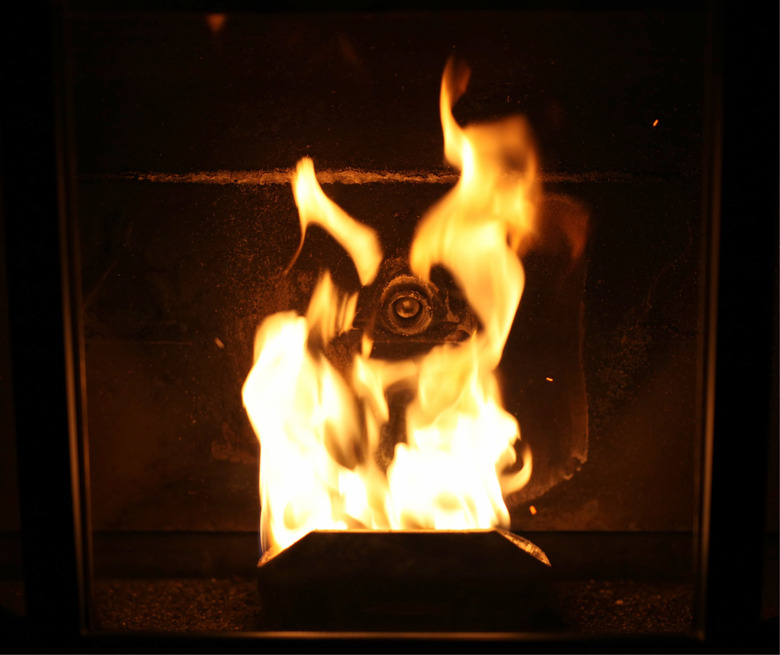How To Adjust A Pellet Stove Damper
Pellet stoves resemble wood-burning stoves but offer appealing qualities. These stoves are popular for being environmentally friendly because the wood pellets burn cleanly and produce fewer emissions and greenhouse gases than burning fossil fuels like coal or oil. Plus, the pellets, which measure less than an inch long, generally contain recycled wood products. Using a pellet stove to heat your home can also reduce your energy bill since the pellets are cheaper than sources like gas or electric when they burn efficiently.
The key to reaping all of these benefits is the word "efficient." Pellet stoves must be properly adjusted in order to ensure that the pellets burn efficiently. A flame needs more than a fuel source in order to burn. Oxygen is another essential ingredient. The pellet stove's damper allows you to adjust the amount of oxygen flowing to the flame.
Where to Find the Damper
The damper may look slightly different based on the style and brand of your pellet stove. It often is found behind the stove. The damper is a pipe that leads to the flame. It either has a mechanism that can be pulled or pushed to increase or decrease the amount of oxygen or a screw that can be loosened or tightened to do the same.
You only need to make minuscule changes to the damper to have a great effect on the flame. Push or pull the damper only a little at a time. In the case of a screw mechanism, turn the screw only a quarter turn at a time when making adjustments.
How to Evaluate the Flame
Not sure when to adjust the damper on your pellet stove? Start by evaluating the quality of your flame. The flame reacts differently according to the quantity of air that feeds it. By adjusting the damper, you attempt to give the flame the right amount of air in order to allow it to burn efficiently.
An efficient flame has an active appearance and a bright orange or yellow color. It should show no black on its tips. If you see this ideal flame burning in your pellet stove, then the damper is set in an ideal position. If your pellet stove's flame is too high and does not move much, it needs more air. These lazy flames also typically have tips that look dark orange or nearly black. To provide more air, pull out or loosen the damper a little to open it up.
On the other end of the spectrum is the overactive flame, which jumps around with ferocity and may resemble a blowtorch in both its intensity and bluish color. This type of flame has an excess of oxygen and needs less oxygen in order to burn efficiently. Close the damper by pushing it in a little or tightening it.
Adjusting Pellet Stove Feed Rate
Once the damper is adjusted appropriately, you should not need to adjust it again unless something changes with the fuel that you use. So, if you change to a new brand of pellets, keep an eye on the flame the first time you burn them to make adjustments as needed.
In addition to evaluating the flame, you can also look for ash buildup or clinkers in the stove to understand whether your stove is operating efficiently. Too much ash indicates poor efficiency, and it may be due to the feed rate.
The feed rate determines how often pellets are moved from the hopper into the main chamber to fuel the flame. Too much ash may indicate that the pellet stove's feed rate is too high. Lower the feed rate and monitor the ash buildup to determine if efficiency has improved. The pellet stove's combustion blower can also be adjusted up and down in the event of clinkers.
